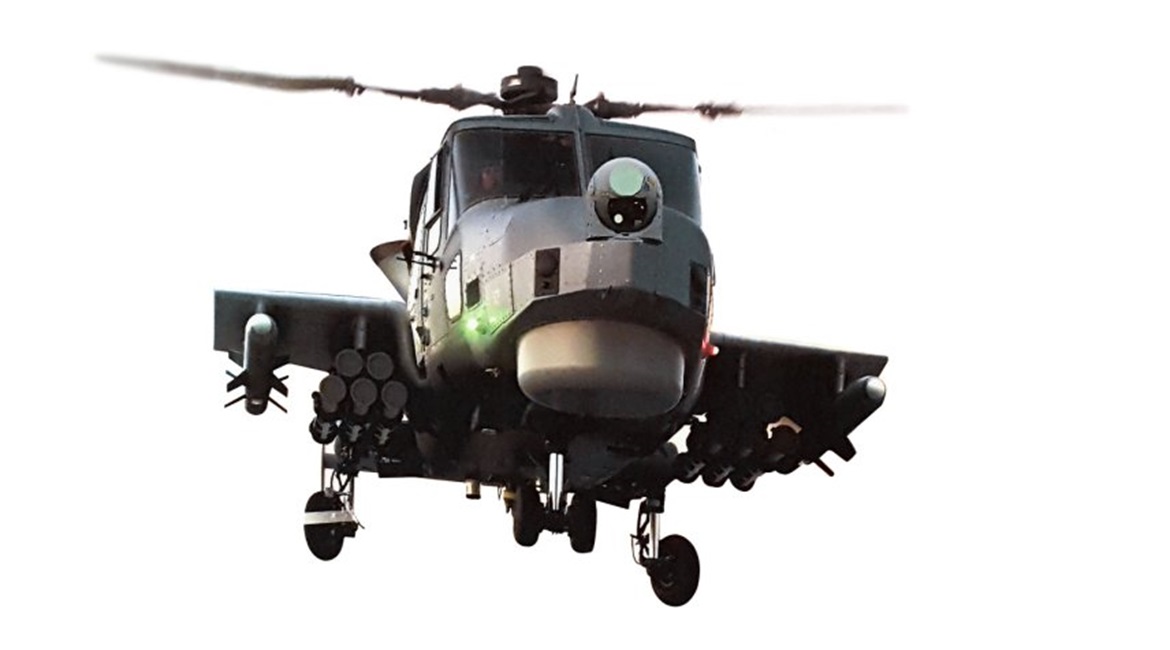
The UK and France has completed the first qualification firing trial of the MBDA Sea Venom/Anti‐Navire Léger (ANL) anti-ship missile, the Defence Equipment and Support (DES) agency announced on 6 March.

The Lynx Wildcat will carry a pair of Sea Venom missiles on the outer stations of a new weapons wing. (Leonardo via Jane’s/Gareth Jennings)
The missile, which will equip the Royal Navy’s AgustaWestland AW159 Lynx Wildcat HMA2 and future French Navy Airbus H160M helicopters, was test launched from a French DGA procurement agency-owned Airbus AS365 Dauphin helicopter off the south of France.
According to DES, the test at the DGA Essais de Missiles test site near Ile du Levant saw the missile reach its cruise phase while skimming low to the sea. The helicopter crew then used images from the infrared seeker to aim the missile manually, and it went on to accurately hit its target.
This latest firing builds on two previous trials which tested Sea Venom’s lock on after launch (LOAL) and lock on before launch (LOBL) capabilities, as well as its low altitude flying and autonomous guidance systems.
Intended to replace the Sea Skua under the Royal Navy’s Future Anti-Surface Guided Weapon (Heavy) requirement, the Sea Venom/ANL is designed to safely engage hostile vessels amongst civilian ones and could be used on a range of targets from small, fast-moving craft through to larger ships.
As previously noted by Jane’s
Looking to read the full article?
Gain unlimited access to Janes news and more...




